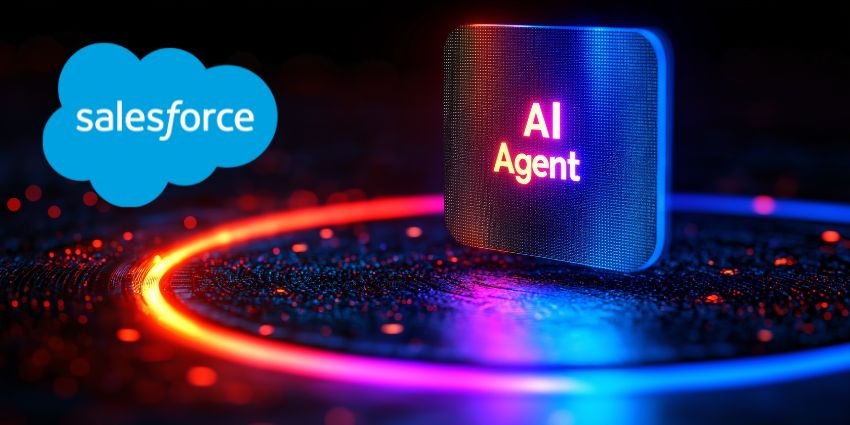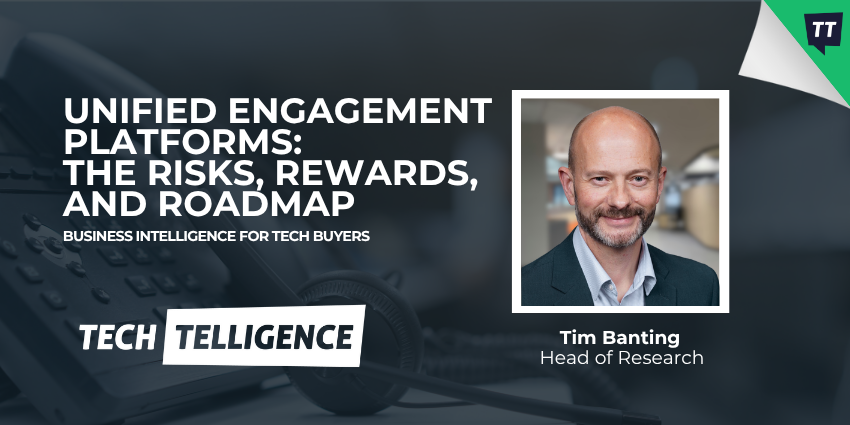Salesforce has announced Agentforce 3 in a move that it claims will position it as a solution to the biggest blockers of scaling AI agents: visibility and control.
To add to this control, the CRM giant’s release also sees the introduction of a new Agentforce Command Center. This is intended to provide complete observability for AI agent operations, allowing organizations to monitor agent health, measure performance, and optimize outcomes across their digital workforce.
“Over the past several months we’ve listened deeply to our customers and continued our rapid pace of technology innovation. The result is Agentforce 3, a major leap forward for our platform that brings greater intelligence, higher performance, and more trust and accountability to every Agentforce deployment,”
Adam Evans, EVP & GM of Salesforce AI, said.
The announcement emphasizes enterprise readiness with over 100 new pre-built industry actions designed to accelerate time-to-value.
Although an announcement for Salesforce, its UC arm Slack could stand to gain substantially through this AI upgrade, having been recently dubbed the frontline of its AI Push.
Command Center’s Observability and Control Features
The Agentforce Command Center delivers monitoring capabilities through what Salesforce describes as “a unified pane of glass” for agent management.
Teams can analyze every AI agent interaction, drill into specific moments, understand usage trends, and receive AI-powered recommendations for tagged conversation types to continuously improve their Agentforce deployment.
Its real-time monitoring includes detailed analytics for latency, escalation frequency, and error rates, plus instant alerts when unexpected issues occur.
The platform tracks all agent activity in Data Cloud, enabling analytics and real-time monitoring through configurable dashboards.
Service Cloud managers can view agent performance on live wallboards alongside human teams and escalate issues.
Equally, the command center offers development features, which include AI-assisted tools in Agentforce Studio for natural language generation of topics and instructions, plus a Testing Center that simulates agent behavior at scale with AI evaluations to test agents before deployment.
The built-in support enables interoperability with over 30 partners including AWS, Box, Cisco, Google Cloud, IBM, Notion, PayPal, and Stripe, with updated Atlas architecture that can support natively hosted LLMs such as Anthropic.
The agent signals can also integrate with existing monitoring tools including Datadog, Splunk, Wayfound, and other enterprise monitoring partners.
Slack’s Strategic Repositioning in Salesforce’s AI Ecosystem
Salesforce has been systematically elevating Slack from a messaging platform to a central pillar of its AI-driven strategy.
The company recently raised Slack Business+ pricing from $12.50 to $15 per user per month, saying this reflects what Salesforce describes as “significant ongoing innovation and customer value” delivered through AI capabilities.
The strategic transformation is most visible in Slack Enterprise+, which is bundled with Salesforce’s Agentforce 1 Editions.
This premium tier includes AI-powered federated search across Slack messages, Salesforce records, and selected third-party applications, effectively positioning Slack as a unified interface for enterprise knowledge discovery.
Will Agentforce 3’s Command Center Features Come to Slack?
Given Salesforce’s pattern of rolling out AI innovations across its platform, there’s a strong likelihood that Agentforce 3’s Command Center capabilities will eventually make their way to Slack.
Salesforce has consistently demonstrated a strategy of cross-pollinating AI features between its core CRM platform and Slack. When the original Agentforce launched, it was quickly followed by announcements of Agentforce availability within Slack channels. This pattern suggests that Command Center’s monitoring and control features could similarly be adapted for Slack environments.
The business case is compelling: Slack users would benefit enormously from having real-time visibility into AI agent performance directly within their communication workflows. Imagine being able to monitor agent escalation rates, view performance dashboards, and receive instant alerts about AI issues—all without leaving Slack. This would transform Slack from merely a platform where AI agents operate to a comprehensive AI management hub.
Such integration would address a critical gap identified by Salesforce’s own research, which found that LLM agents executed single-function CRM tasks correctly just 58 percent of the time, dropping to 35 percent for multi-step tasks. Having Command Center visibility within Slack could help teams quickly identify and resolve performance issues that arise from data silos between Slack conversations and Salesforce records.
Slack’s repositioning hints at Salesforce’s understanding that successful AI implementation requires intuitive interfaces that fit naturally into existing work patterns, with unified communications being an obvious entry point.
As a result, Salesforce also announced an update that further embeds Slack into the heart of its CRM platform. The update brings a new Salesforce Channels, a new type of Slack channel that connects directly with Salesforce records such as accounts, opportunities, and custom objects that allows human and AI teammates to collaborate in context.
These channels are fully accessible in both Slack and Salesforce and sync structured CRM data with team conversations in real time.
By leveraging Slack’s established position in workplace communication, Salesforce can roll out their AI agents through a familiar platform that brings users closer to its AI offerings.
This move continues Salesforce’s broader strategy to consolidate applications, workflows, AI agents, and data into one intelligent platform.
A Integrated Approach to AI
The introduction of Agentforce 3 and its Command Center represents a drive to be the leader of the agentic AI space.
By addressing visibility, control, and performance monitoring through a unified platform, Salesforce is positioning itself to bridge the gap between AI potential and real-world enterprise deployment.
With Slack increasingly being seen as Salesforce’s spear with which to push through its AI ambitions, it might not be too long until the new updates trickle down.
As Salesforce continues to consolidate its AI, CRM, and communication tools into a cohesive ecosystem, organizations may find themselves with unprecedented visibility into how AI agents perform across their entire digital workforce.







